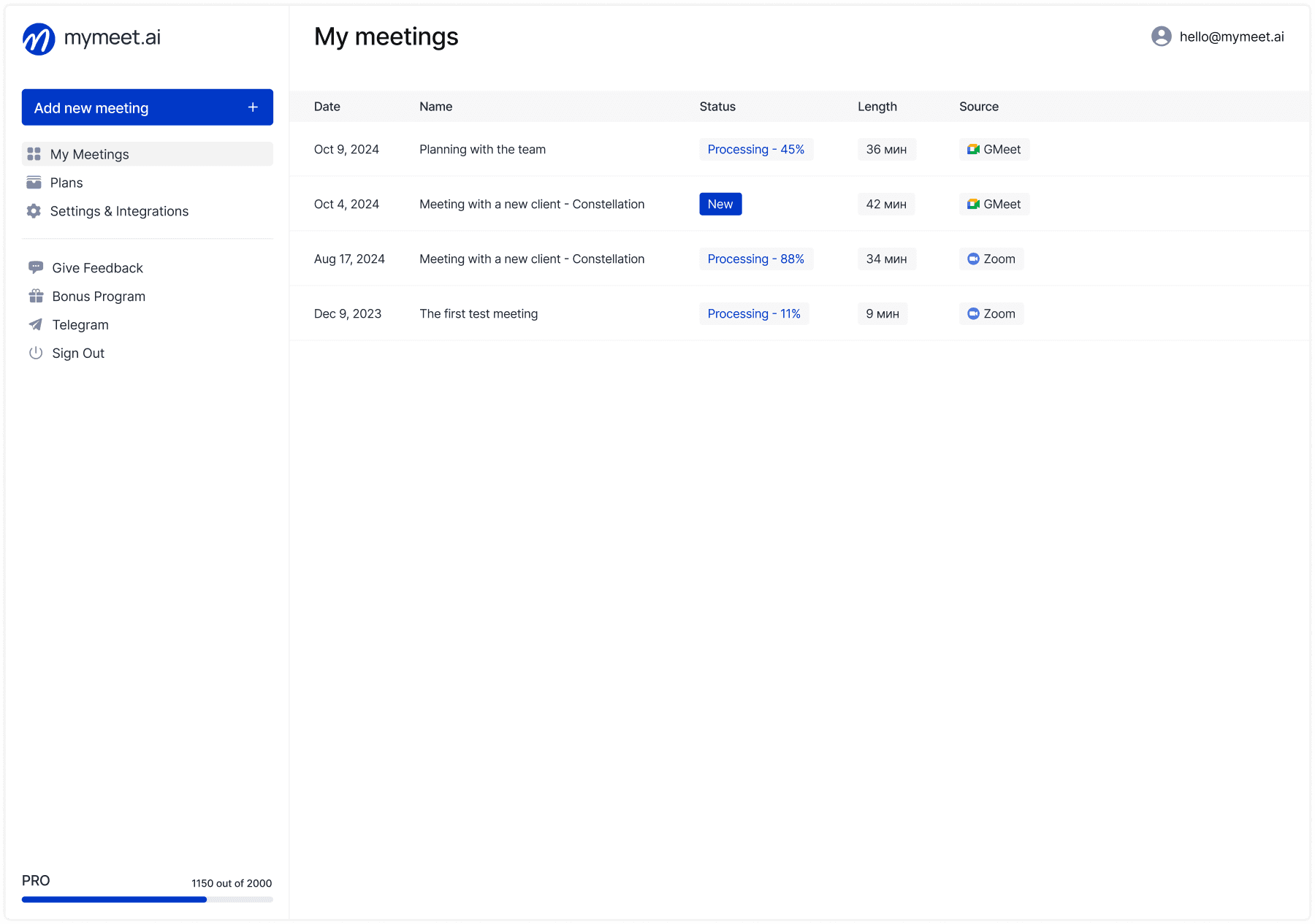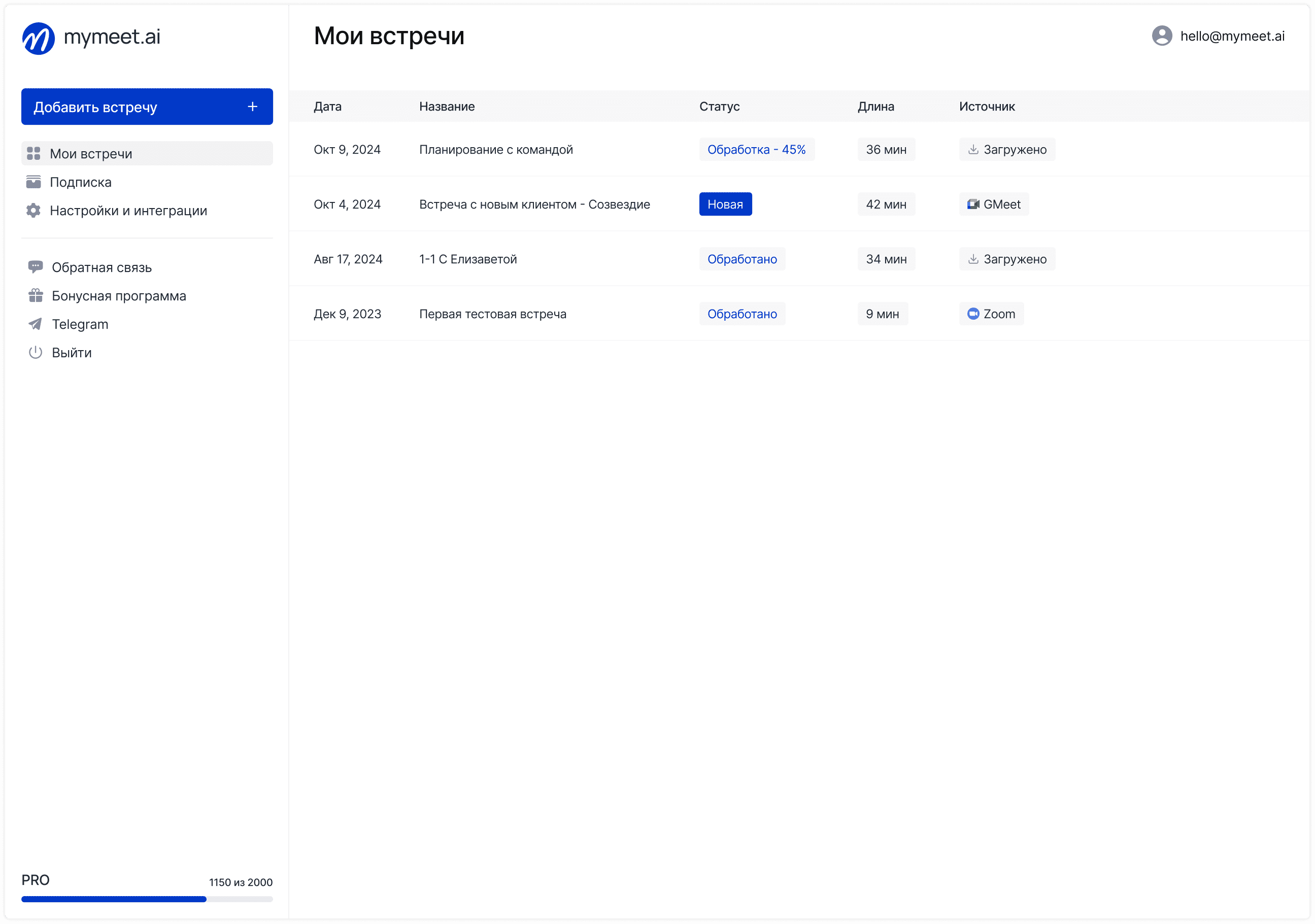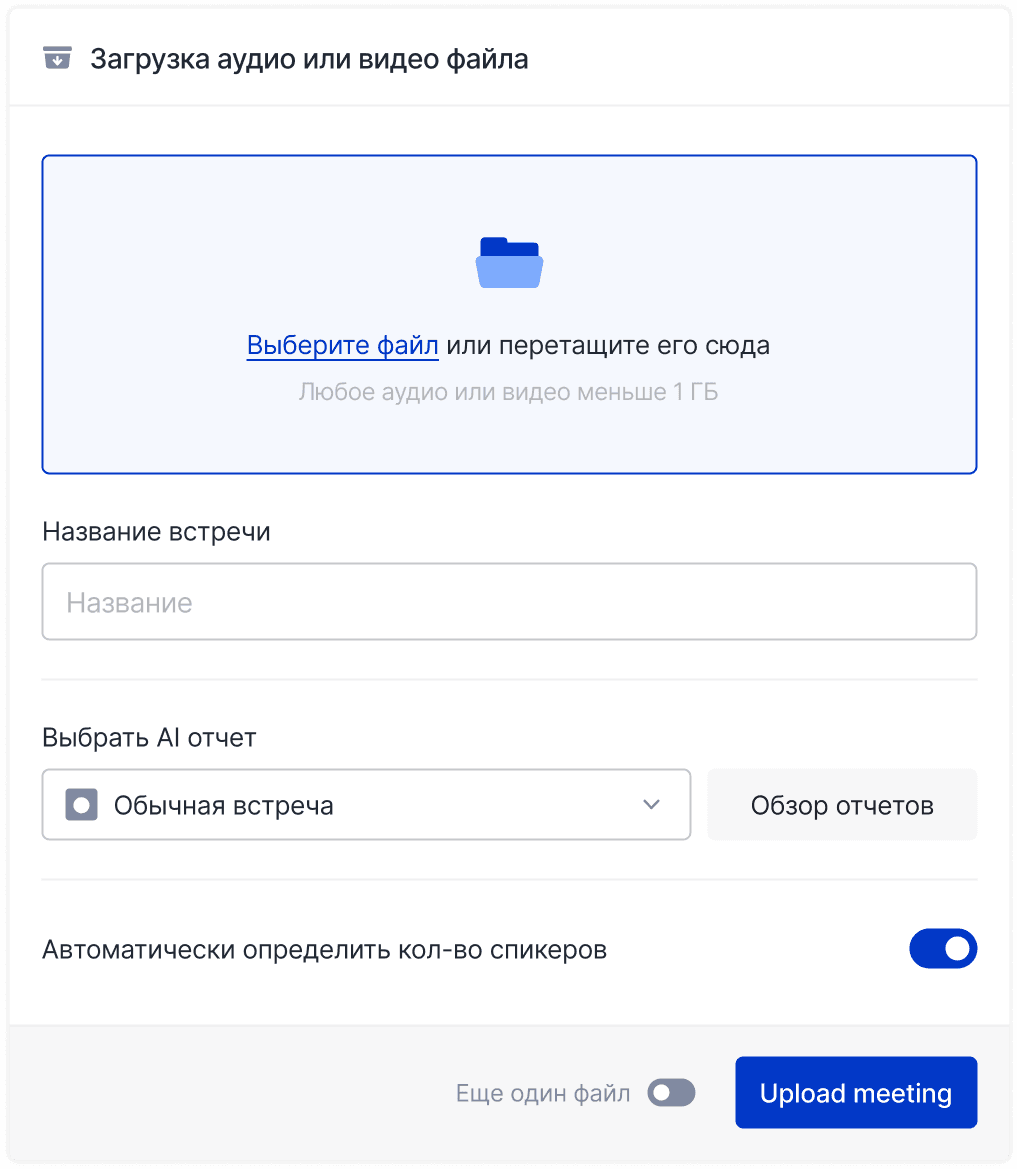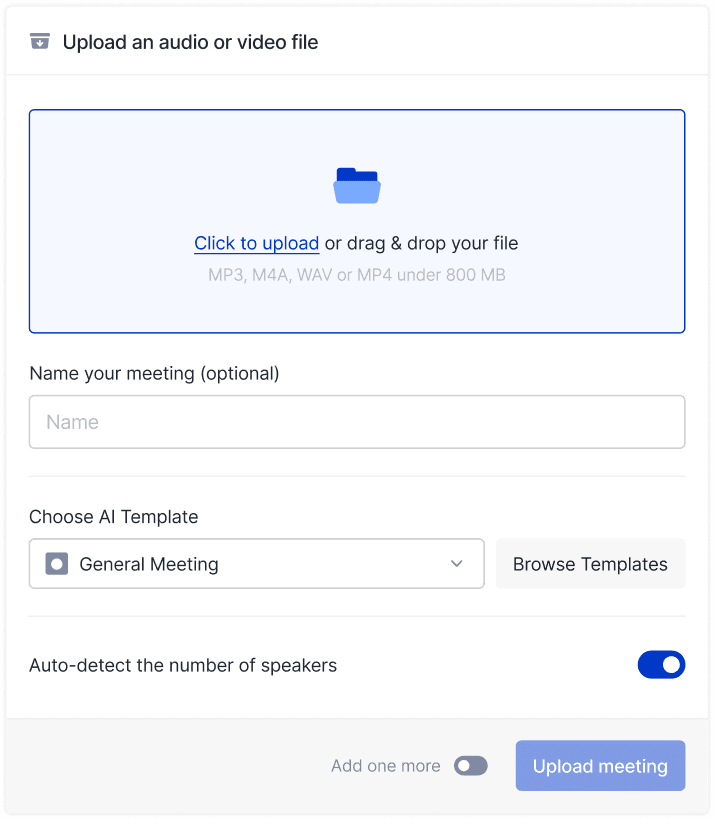Technology & AI

Radzivon Alkhovik
Jul 2, 2025
Digital agency BigDigital was spending 50 hours per month on routine tasks: recording call notes, compiling reports, distributing tasks across the team. The CEO dreamed of freeing up time for strategic tasks but didn't know where to start with automation.
Within six months, the company implemented 8 AI solutions for different processes. The results exceeded expectations: 50 hours per month were freed up, response speed to client requests increased 3x, and project quality improved as the team stopped drowning in routine work.
In this article, we'll examine 15 specific ways to apply AI for business automation. Each method includes process description, implementation examples, and expected results for companies.
AI Application for Business Process Automation: Fundamentals
AI automation fundamentally differs from traditional automation. Regular systems follow rigid algorithms, while AI adapts to changes, learns from data, and makes decisions in non-standard situations.
Key Differences of AI Automation:
Flexibility and Adaptability Traditional automation works on "if-then" principles: if a condition is met, the system performs a predetermined action. AI analyzes context, considers multiple factors, and chooses optimal solutions from several options.
Data Learning AI systems improve their performance with each new case. The more data the system processes, the more accurate its decisions and predictions become.
Working with Unstructured Data AI understands text, speech, images, and video. This allows automation of processes that previously required only human participation: document analysis, call processing, photo-based quality control.
Criteria for Selecting Processes for AI Automation
Not all business processes are suitable for AI automation. Optimal candidates possess the following characteristics:
High repeatability: process is performed regularly with similar actions
Clear input data: structured information available for analysis
Measurable results: AI work quality can be evaluated
Significant time investment: automation will provide noticeable resource savings
15 Ways to Automate Business with AI
Let's examine specific methods of applying AI for core business process automation. Each method includes technology description, implementation examples, and expected results for companies.
Sales and Marketing
Sales and marketing departments are first to experience AI automation benefits. Technologies help work with leads more effectively, personalize communication, and increase conversion. Here are five key AI applications in this area.
1. Lead Generation Automation
AI finds potential customers on social networks, professional platforms, and open databases. The system analyzes company profiles, identifies signs of need for your services, and forms hot lead lists.
How it works: AI scans public sources, searches for companies by specified criteria (size, industry, geography), analyzes their activity, and determines purchase readiness. The system automatically collects contact information and transfers qualified leads to CRM.
Business result: saves manager time on client search, increases quality lead quantity, improves cold sales effectiveness.
This technology is especially effective for B2B companies working with corporate clients and spending significant resources on potential buyer search.
2. Lead Scoring and Qualification
AI evaluates each lead's quality based on multiple factors: acquisition source, website behavior, company size, budget, need urgency. The system assigns each lead a score and ranks them by priority.
How it works: algorithms analyze successful deal history, identify best client characteristics, and apply this knowledge to evaluate new leads. AI considers dozens of parameters: from website time spent to contact person's position.
Business result: managers work only with promising leads, lead-to-deal conversion increases, sales cycle shortens.
Lead scoring helps properly distribute sales team efforts and avoid time loss on non-promising clients.
3. Email Campaign Personalization
AI creates individual emails for each recipient: selects subject, content, send time, and communication frequency. The system analyzes subscriber behavior and adapts messages to their interests.
How it works: AI segments subscriber base by behavioral patterns, studies interaction history with previous emails, and generates personalized content. The system tests different email variants and selects the most effective ones.
Business result: email campaign open rate and click rate growth, sales conversion increase, unsubscribe rate reduction.
AI-based personalization transforms mass mailings into individual communication, significantly increasing subscriber loyalty.
4. Competitor Analysis and Pricing
AI monitors competitor prices, marketing activities, customer reviews, and company news. The system analyzes collected information and suggests pricing strategy and positioning adjustments.
How it works: AI automatically scans competitor websites, price lists, advertisements, and social media. The system identifies price changes, new products, promotions, and market trends. Based on analysis, AI recommends optimal pricing for profit maximization.
Business result: quick market change response, optimal pricing, new business opportunity identification.
Automatic competitor monitoring allows staying one step ahead and making informed strategic decisions.
5. Meeting and Negotiation Automation
AI records meetings, creates transcriptions, analyzes negotiation content, and forms structured reports. The system highlights key decisions, tasks, client objections, and sales improvement insights.
How it works: AI assistant connects to video conferences, recognizes participant speech, analyzes conversation tone, and extracts important information. The system creates meeting summaries, task lists with responsible parties, and recommendations for further client work.
Business result: frees manager time from note-taking, improves agreement documentation quality, sales effectiveness analysis.
Meeting automation becomes important for companies where meeting culture plays a major role in decision-making.
HR and Personnel Management
HR processes require significant time for routine operations: resume screening, schedule planning, performance analysis. AI automates these tasks and helps HR specialists focus on strategic issues. Here are three most effective AI applications in HR.
6. Automatic Resume Screening
AI analyzes candidate resumes, matches their skills with job requirements, and ranks by fit. The system considers work experience, education, key skills, and even resume writing style.
How it works: AI extracts key information from various resume formats, standardizes data, and compares with ideal candidate profiles. The system evaluates each resume by multiple criteria and provides top candidates for interviews.
Business result: reduces time for initial candidate screening, improves recruitment quality, reduces human factor influence in evaluation.
Automatic resume screening benefits companies with high turnover or active staff growth.
7. Work Schedule Planning
AI creates optimal employee schedules considering their competencies, workload, preferences, and business needs. The system automatically distributes shifts, plans vacations, and replaces absent employees.
How it works: AI analyzes work history, employee productivity at different times, project plans, and staffing requirements. The system creates schedules that maximize team effectiveness and consider worker preferences.
Business result: optimal personnel loading, overtime reduction, increased employee satisfaction with time planning.
Smart schedule planning helps balance business needs and employee comfort, positively affecting retention.
8. Employee Performance Analysis
AI analyzes work metrics, task completion quality, team interaction, and identifies factors affecting productivity. The system helps identify leaders, plan career development, and prevent burnout.
How it works: AI collects data from work systems, analyzes activity patterns, result quality, and colleague feedback. The system identifies each employee's strengths and development areas.
Business result: objective performance evaluation, personalized development plans, early team problem identification.
AI performance analysis helps create fair evaluation and motivation systems based on factual data rather than subjective opinions.
Finance and Accounting
Financial processes are saturated with routine document processing, data reconciliation, and report compilation operations. AI significantly accelerates these tasks and reduces error count. Three main financial process automation directions provide maximum effect.
9. Invoice Processing and Document Flow
AI automatically processes incoming invoices, receipts, contracts, and other financial documents. The system extracts key information, verifies data accuracy, and creates accounting system entries.
How it works: AI recognizes text in various format documents, extracts amounts, dates, counterparty details, and nomenclature codes. The system reconciles data with contracts, verifies calculation accuracy, and automatically forms accounting entries.
Business result: document processing acceleration, accounting error reduction, frees accountant time for analytical tasks.
Document flow automation is important for companies due to complex legislation requirements and large mandatory reporting volumes.
10. Cash Flow Forecasting
AI analyzes receipt and payment history, considers business seasonality, sales plans, and forecasts cash flows several months ahead. The system helps plan liquidity and avoid cash gaps.
How it works: AI studies client payment patterns, supplier payment terms, external factor influence on financial flows. The system builds forecast models considering various business development scenarios.
Business result: accurate cash planning, working capital optimization, financial risk reduction.
Accurate cash flow forecasts help avoid cash gaps and optimally plan business development investments.
11. Tax Accounting Automation
AI tracks tax legislation changes, verifies tax calculation accuracy, and automatically forms tax reports. The system helps avoid penalties and optimize tax burden.
How it works: AI monitors legislation updates, analyzes company operations for tax consequences, and automatically applies current rates and benefits. The system checks declarations before submission and identifies potential errors.
Business result: tax legislation compliance, assessment risk minimization, reporting preparation time savings.
Tax accounting automation is critically important in conditions where tax legislation frequently changes and requires constant monitoring.
Operations and Logistics
Operational processes require constant optimization to reduce costs and increase work speed. AI helps automate planning, control, and decision-making in operations. Four key automation directions provide the greatest effect for operational activities.
12. Inventory Management
AI forecasts product demand, optimizes inventory levels, and automatically forms supplier orders. The system considers seasonality, trends, competitor actions, and external factors for accurate planning.
How it works: AI analyzes sales history, marketing campaign influence, customer behavior, and external factors (weather, holidays, economic events). The system calculates optimal order size for each product and automatically creates supplier requests.
Business result: storage cost reduction, product shortage reduction, working capital optimization.
Smart inventory management helps find balance between storage costs and shortage losses, critically important for retail profitability.
13. Delivery Optimization
AI plans delivery routes considering traffic, weather conditions, order priority, and driver limitations. The system dynamically adjusts plans throughout the day and minimizes total delivery time.
How it works: AI analyzes maps, traffic forecasts, transport characteristics, and delivery time restrictions. The system builds optimal routes, considering daily changes, and redistributes orders among couriers for maximum efficiency.
Business result: logistics cost reduction, delivery acceleration, customer satisfaction increase.
Logistics optimization is important with rising fuel costs and increased customer speed requirements.
14. Predictive Equipment Maintenance
AI analyzes equipment sensor data, identifies wear signs, and predicts failures before they occur. The system helps plan technical maintenance and avoid unplanned downtime.
How it works: AI collects vibration, temperature, pressure, and other equipment operation parameter data. The system identifies anomalies, compares current indicators with historical data, and predicts failure probability.
Business result: equipment downtime reduction, equipment service life extension, maintenance cost optimization.
Predictive maintenance transforms reactive repair approach into proactive strategy, fundamentally changing equipment operation economics.
15. Product Quality Control
AI uses computer vision for automatic production line quality control. The system identifies defects, standard non-compliance, and automatically rejects substandard products.
How it works: cameras photograph conveyor products, AI analyzes images and compares them with quality standards. The system identifies scratches, chips, incorrect dimensions, color deviations, and other defects with high accuracy.
Business result: product quality improvement, defect cost reduction, quality control process acceleration.
Automatic quality control becomes a competitive advantage, allowing guaranteed stable product quality with production volume growth.
mymeet.ai: Meeting Automation with Artificial Intelligence

Meetings occupy most of executives' working time but often proceed ineffectively. Important information gets lost, agreements are forgotten, and valuable insights remain unused. The mymeet.ai platform solves these problems through AI automation.
The Problem of Ineffective Meetings in Business
Business executives spend significant working time on meetings, client negotiations, and internal meetings. Much important information gets lost: discussion details are forgotten, agreements aren't documented, and valuable insights remain unused.
Traditional meeting protocol maintenance distracts from discussion participation and requires additional time for post-negotiation record processing. Many decisions are made repeatedly because participants remember previous meeting details differently.
How mymeet.ai Automates Business Meetings
The mymeet.ai platform solves ineffective meeting problems using artificial intelligence. The AI assistant automatically records negotiations, creates accurate transcriptions, and generates structured meeting reports.

Key meeting automation capabilities:
Automatic recording and transcription — AI connects to video conferences and creates text transcripts with speaker separation

Structured AI reports — system analyzes meeting content and highlights key topics, decisions, and agreements
Task and assignment extraction — AI automatically finds tasks, assigns responsible parties, and records deadlines
AI chat about meetings — ability to ask questions about meeting content and receive accurate transcript answers
Specialized reports — ready templates for different meeting types: sales, HR interviews, project management

These capabilities transform the meeting approach: participants can fully focus on discussion without note-taking distraction.
mymeet.ai Benefits for Companies
Popular platform integration: Mymeet.ai works with major video conferencing platforms: Zoom, Google Meet, Microsoft Teams, allowing solution use in existing IT infrastructure.
Quality language support: Platform specially adapted for English-speaking meetings and supports business communication specifics. Also available processing in 72 other languages for international negotiations.
Telegram bot for mobility: Built-in Telegram bot allows quick audio processing and brief report receiving directly in messenger, convenient for mobile work.
Real Client Results
electro.cars company implemented mymeet.ai for sales department meeting automation and achieved 15 hours weekly savings previously spent on note-taking and client negotiation report compilation.
BigDigital agency uses the platform for client call automation and saves 50 hours monthly on meeting documentation and project insight extraction.
AI meeting automation is one of the fastest ways to evaluate artificial intelligence effectiveness in business. Results are visible after first processed meetings.
Special CRM integrations and API solutions are available for corporate clients. Discuss implementation possibilities with our sales team through the form.

How to Choose a Process for AI Automation
Successful automation begins with correct process selection. Not all tasks are suitable for AI, and it's important to determine priorities for maximum implementation effect.
Automation Priority Matrix
Correct process prioritization for automation determines entire project success. Let's divide all possibilities into three categories by implementation complexity and result speed.
High Priority (start with this): Processes with high repeatability and clear execution rules provide quick results and demonstrate AI value to the team.
Incoming request processing — automatic inquiry distribution saves manager hours daily
Meeting and negotiation analysis — instant executive time savings on note-taking
Primary document processing — routine operation acceleration multiple times
These processes provide quick visible results and help the team believe in AI automation effectiveness.
Medium Priority (second implementation stage): Processes requiring integration with existing systems or data accumulation for AI training.
Sales forecasting — needs data history for minimum 6-12 months
Inventory management — requires warehouse system integration
HR analytics — cumulative effect, results visible after several months
These processes require more preparation time but provide significant long-term effect.
Low Priority (for mature projects): Complex processes requiring significant investments and expertise for implementation.
Production predictive analytics — requires sensor installation and big data collection
Complex logistics automation — high initial investments
These projects should be approached only after successful simpler solution implementation and AI expertise accumulation.
Process Evaluation Criteria
When selecting automation processes, evaluate their potential by several key parameters determining payback speed and implementation effectiveness.
When choosing automation processes, evaluate them by following parameters:
Execution frequency: daily processes provide greater time savings than monthly ones
Time costs: automating processes taking 2+ hours daily pays back faster
Participant count: processes involving many employees provide scalable effect
Input data quality: structured information availability simplifies AI implementation
Correct evaluation by these criteria helps select processes with maximum ROI potential for your company.
AI Business Automation Mistakes
Studying typical mistakes helps avoid problems and accelerate AI automation results. Most failed projects relate to incorrect expectations and planning.
Trying to Automate All Processes at Once
Many companies try implementing AI in all processes simultaneously, leading to work chaos and employee resistance. Start with 1-2 simple processes, achieve success, and gradually expand AI applications.
Underestimating Data Quality Importance
AI systems work only as well as data quality for their training. Ensure sufficient structured and current information before starting automation projects.
Ignoring Human Factor
Automation changes familiar work processes, which may cause team resistance. Always train employees on new tool usage and explain how AI will help them work more effectively.
Lack of Result Measurement
Without clear metrics, automation effectiveness evaluation is impossible. Define KPIs before AI implementation and regularly track progress: time savings, error reduction, productivity growth.
Checklist: AI Automation Readiness
Evaluate your company's readiness for AI automation implementation by following criteria:
Repeating processes identified — compiled list of regularly performed tasks
Digital data available — processes generate structured information for analysis
Team ready for changes — employees open to new tool implementation
Budget determined — funds allocated for AI solution purchase and personnel training
Responsible person appointed — someone will coordinate automation project
Success metrics selected — KPIs defined for automation effectiveness evaluation
Completing this checklist helps understand if your company is ready for successful AI automation implementation.
Conclusion
AI automation has become necessary for business competitiveness. Companies already starting implementation gain significant advantages: save employee time, reduce operational costs, and focus on strategic tasks.
The 15 AI applications examined in this article cover main business processes of most companies. It's not necessary to implement everything at once — choose 1-2 processes with maximum time-saving potential and start with them.
Key successful automation principles:
Start with simple, repeating processes
Ensure quality data for AI training
Train team on new tool usage
Measure results and scale successful solutions
Following these principles helps avoid typical mistakes and faster achieve AI automation implementation results.
The time to start automation is now. Each month of delay means missed opportunity to reduce costs and increase team effectiveness.
Try automation today — start with your business meetings using mymeet.ai. 180 minutes of free testing will show how AI can transform ordinary processes in your company.
FAQ on AI Business Automation
What processes are best suited for AI automation?
Optimal are repeating tasks with clear rules: document processing, data analysis, customer communication. Start with processes taking significant daily time.
How much time does AI automation implementation require?
Simple solutions can be implemented in 1-2 weeks, complex automation projects require 2-6 months. Speed depends on process complexity and data readiness.
Are technical knowledge needed for AI business implementation?
Modern AI platforms are created for business users without technical education. Programming is not required for basic automation.
How to measure ROI from business process automation?
Compare time costs before and after implementation, multiply savings by hourly cost. Also consider error reduction and work quality improvement.
What mistakes are most common in automation?
Main mistakes: trying to automate everything at once, ignoring data quality, insufficient personnel training, and lack of clear success metrics.
Is it safe to use AI for corporate data processing?
When choosing proven solutions with security certificates and local data placement, risks are minimal. Important to study supplier privacy policy.
How much do business automation solutions cost?
Costs vary from several hundred dollars monthly for simple tools to tens of thousands for complex corporate solutions.
Can unique business processes be automated?
Yes, but requires more time and resources. For unique processes, it is better to standardize them first, then automate.
How to choose an AI solution supplier for automation?
Pay attention to industry experience, language support availability, existing system integration possibility, and client reviews.
What to do if employees resist automation?
Involve team in solution selection process, show specific work advantages, provide quality training and support at all implementation stages.
Radzivon Alkhovik
Jul 2, 2025








